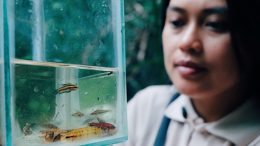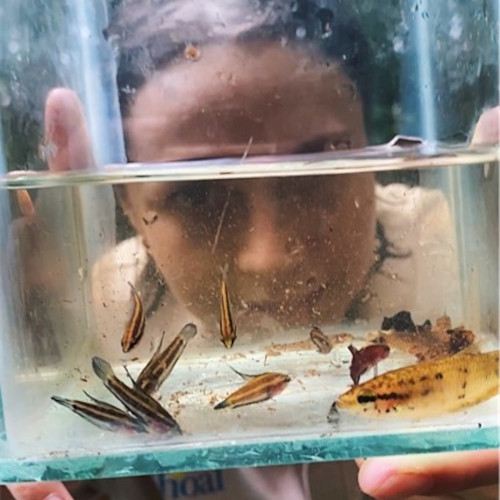Species name:
Red wine betta (Betta burdigala)
IUCN Red List status:
Description:
These gorgeous fish, less than an inch in length, are known for their deep red color, reminiscent of Bordeaux wine.

Some betta fish are paternal mouth-brooders, while others, like Betta burdigala, are bubble nest builders — they construct nests out of air bubbles and saliva to protect their eggs and young.
Another fun fact: They’re from the suborder Anabantoidei, which mean they have a special labyrinth organ that lets them breath atmospheric oxygen. This helps them survive in the poorly oxygenated water of flooded forests. (Yes, forests.)
Where they’re found:
Betta burdigala is found in only one watershed on the small island of Bangka, Indonesia. The fish are acidic, blackwater swamp specialists and can only thrive in the flooded peat swamp forest on Bangka.
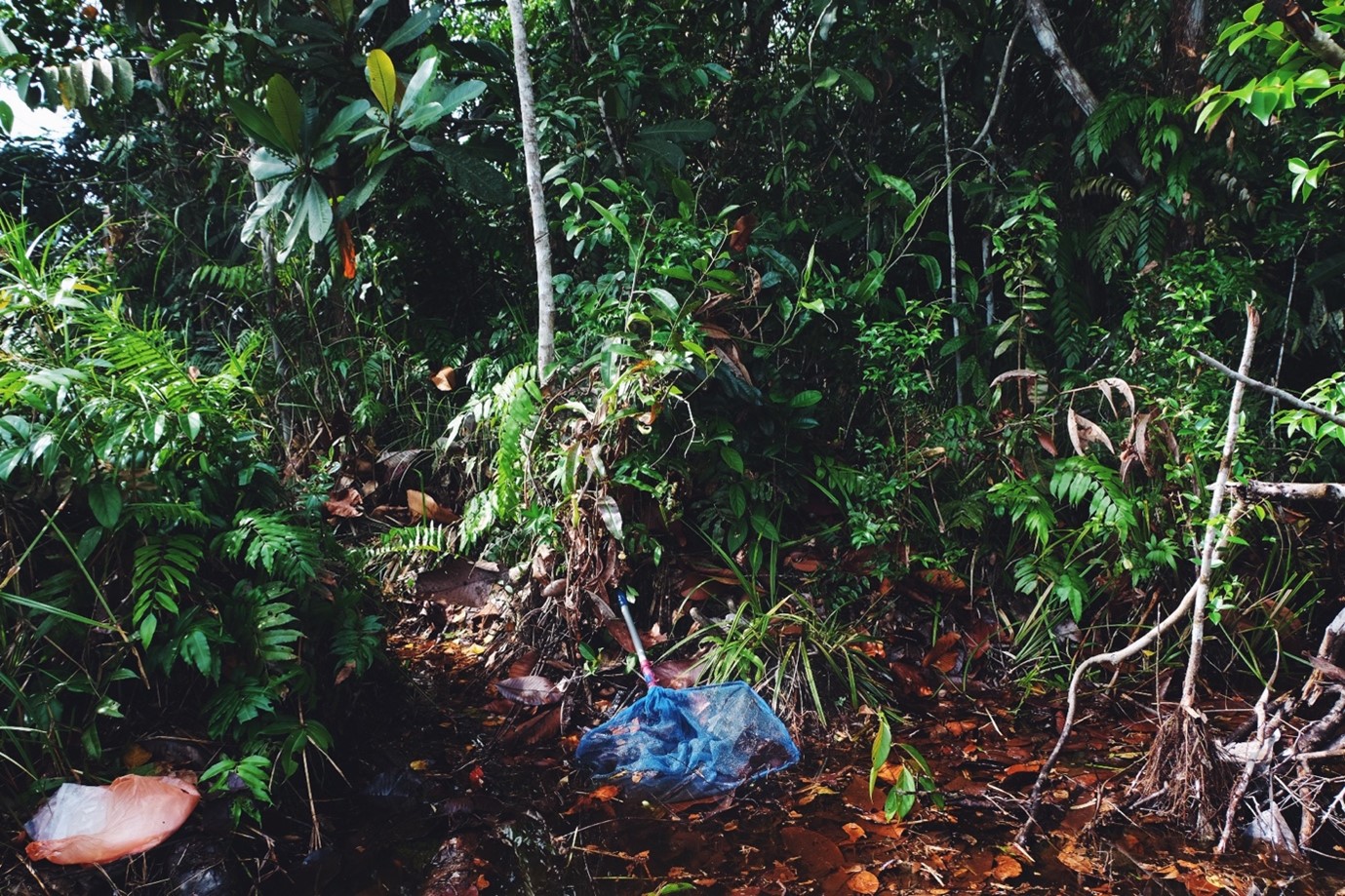
Why they’re at risk:
These fish face rapid habitat destruction of the peat swamps for palm oil plantations and urbanization, a problem compounded by rampant plastic pollution. This encroachment destroys their small habitat, fragments the population, and reduces genetic diversity.
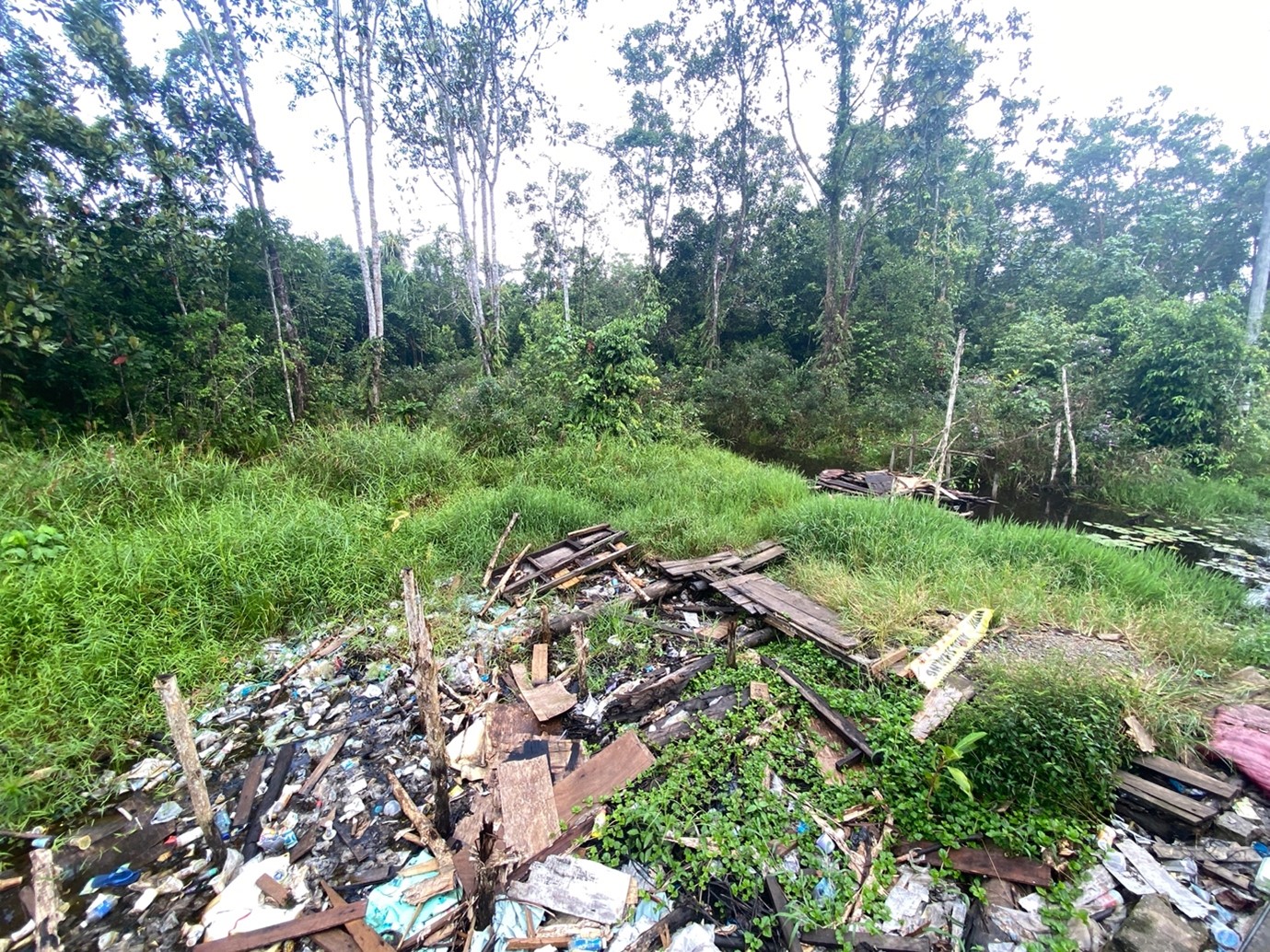
Who’s trying to save them:
Last year we launched our collaborative Betta burdigala project, an international effort to save the species — and many others in the region. The project is led by Universitas Airlangga, Universitas Bangka-Belitung, University of Leeds, and National University of Singapore and supported by SHOAL and Asian Species Action Partnership. Local communities (including the Seluang Community) are working with institutions to protect these special fish and their habitat through captive breeding and identification of possible sanctuary sites.

How I’m helping this species:
When you ask people where to find fish, they will almost never say “in the forest.”
But the forest is where I find myself: Brushing aside the thick layers of leaves to drag a basket net through the shallow swampy water and finding tiny, deep red fish — the remaining population of Betta burdigala — literally beneath my feet.
The site where this species was first caught and described — a previously undisturbed primary peat swamp forest — is now directly roadside and filled with plastic pollution and debris. Reconfiguring my mind to put the pre- and post-pollution states side by side was bizarre and frustrating.
I’ve never experienced wonder quite like paddling through a pristine peat swamp forest of Bangka Island — and then realizing that this could be the solution to protecting this overlooked gem of a species.
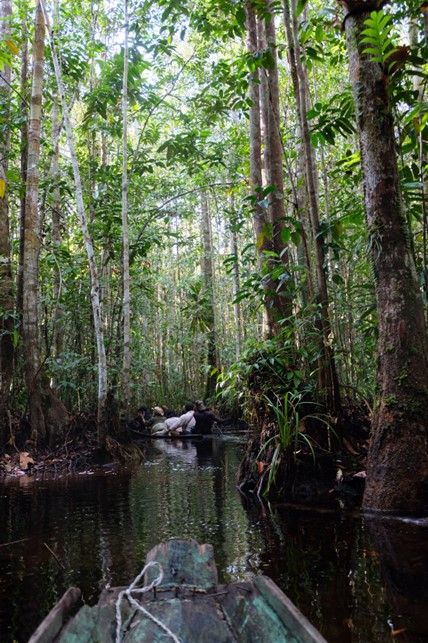
We need to preserve this site. Our captive-breeding and reintroduction program is nothing without a dedicated protected area which can buffer the fragile population from any threats. This is the real challenge.
What else do we need to understand or do to protect this species?
The persistence of Betta burdigala and the other many endangered fish species in Bangka relies on the preservation of their fragile peat swamp habitats. We need to fully understand and map their distributions across the island to identify population strongholds in the fragmented forest. Genetic analysis needs to be completed to make sure that populations have enough diversity to be resilient to change. Trade protection through CITES needs to be considered, as the species are caught for the ornamental trade in an unregulated and unmonitored manner. Finally, a protected area needs to be designated and agreed upon by all communities to create a sanctuary for fish and other peat swamp species to thrive.
What you can do to help:
You can help support the team by engaging with our work through SHOAL and ASAP. Bangka Island is beautiful but rarely visited by tourists. Ecotourism may help support the communities conserving these habitats — they’d make great snorkeling sites.
Meanwhile, watch this short film highlighting the plight of these gorgeous fish and the team trying to save them:
Do you have a story about species advocacy or conservation to share? Here’s how to write your own “Save This Species” entry.
Previously in The Revelator:
Save This Species: Sumatran Orangutans

